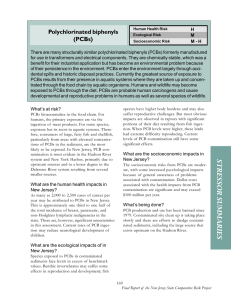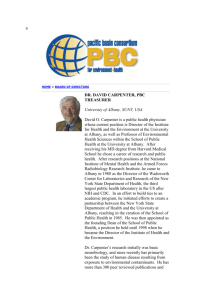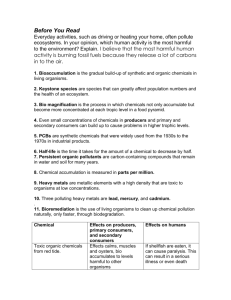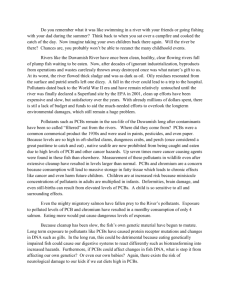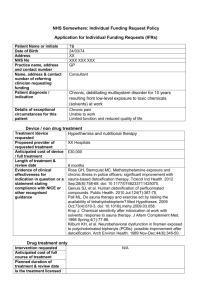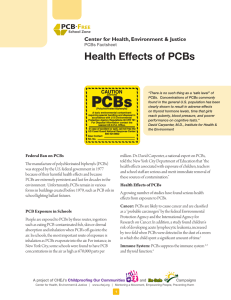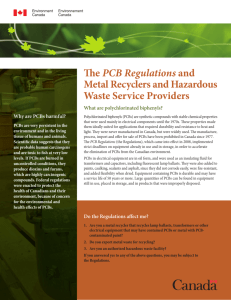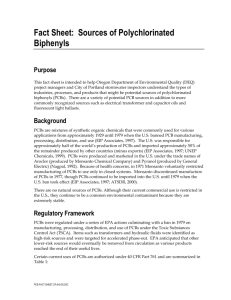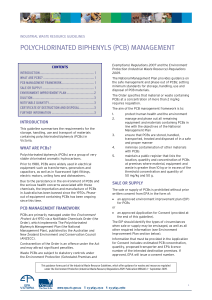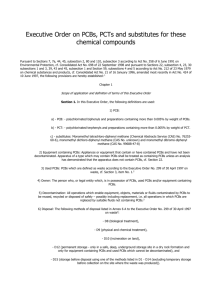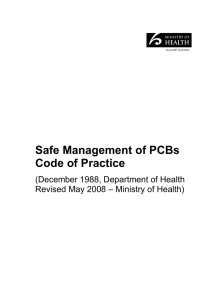PCB factsheet
advertisement
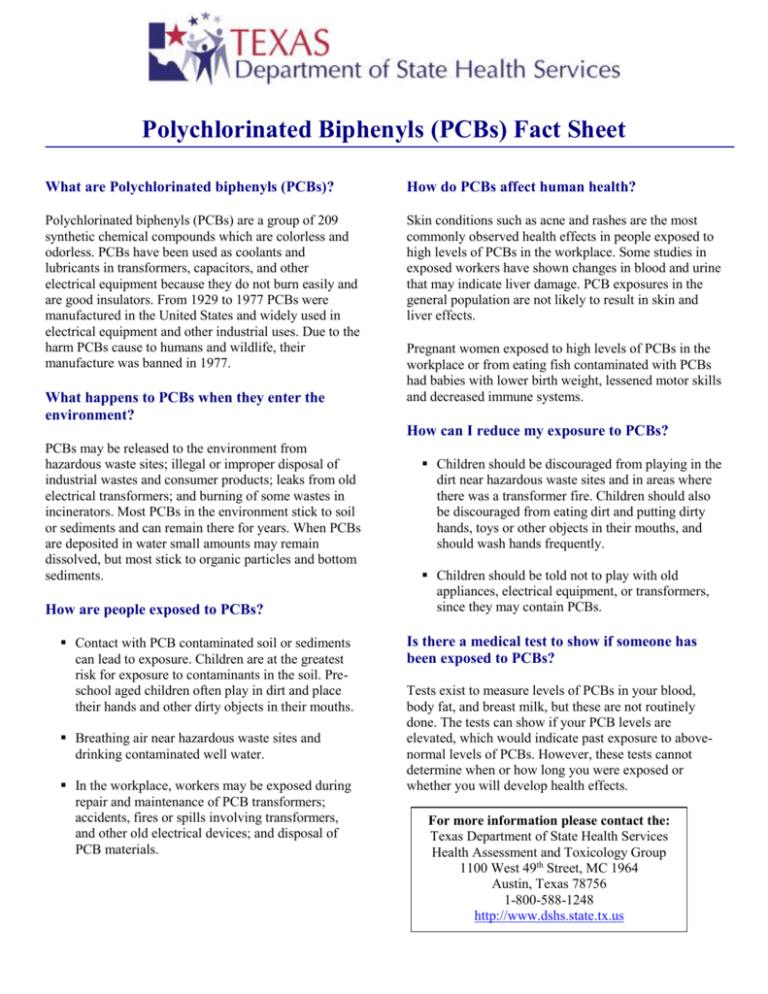
Polychlorinated Biphenyls (PCBs) Fact Sheet What are Polychlorinated biphenyls (PCBs)? How do PCBs affect human health? Polychlorinated biphenyls (PCBs) are a group of 209 synthetic chemical compounds which are colorless and odorless. PCBs have been used as coolants and lubricants in transformers, capacitors, and other electrical equipment because they do not burn easily and are good insulators. From 1929 to 1977 PCBs were manufactured in the United States and widely used in electrical equipment and other industrial uses. Due to the harm PCBs cause to humans and wildlife, their manufacture was banned in 1977. Skin conditions such as acne and rashes are the most commonly observed health effects in people exposed to high levels of PCBs in the workplace. Some studies in exposed workers have shown changes in blood and urine that may indicate liver damage. PCB exposures in the general population are not likely to result in skin and liver effects. What happens to PCBs when they enter the environment? Pregnant women exposed to high levels of PCBs in the workplace or from eating fish contaminated with PCBs had babies with lower birth weight, lessened motor skills and decreased immune systems. How can I reduce my exposure to PCBs? PCBs may be released to the environment from hazardous waste sites; illegal or improper disposal of industrial wastes and consumer products; leaks from old electrical transformers; and burning of some wastes in incinerators. Most PCBs in the environment stick to soil or sediments and can remain there for years. When PCBs are deposited in water small amounts may remain dissolved, but most stick to organic particles and bottom sediments. How are people exposed to PCBs? Contact with PCB contaminated soil or sediments can lead to exposure. Children are at the greatest risk for exposure to contaminants in the soil. Preschool aged children often play in dirt and place their hands and other dirty objects in their mouths. Breathing air near hazardous waste sites and drinking contaminated well water. In the workplace, workers may be exposed during repair and maintenance of PCB transformers; accidents, fires or spills involving transformers, and other old electrical devices; and disposal of PCB materials. Children should be discouraged from playing in the dirt near hazardous waste sites and in areas where there was a transformer fire. Children should also be discouraged from eating dirt and putting dirty hands, toys or other objects in their mouths, and should wash hands frequently. Children should be told not to play with old appliances, electrical equipment, or transformers, since they may contain PCBs. Is there a medical test to show if someone has been exposed to PCBs? Tests exist to measure levels of PCBs in your blood, body fat, and breast milk, but these are not routinely done. The tests can show if your PCB levels are elevated, which would indicate past exposure to abovenormal levels of PCBs. However, these tests cannot determine when or how long you were exposed or whether you will develop health effects. For more information please contact the: Texas Department of State Health Services Health Assessment and Toxicology Group 1100 West 49th Street, MC 1964 Austin, Texas 78756 1-800-588-1248 http://www.dshs.state.tx.us
